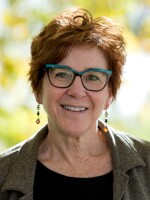This article first appeared in the St. Louis Beacon: When you enjoy a dance presentation, you expect to be moved, emotionally. But in an upcoming Leverage Dance Theater performance, the audience actually travels with the modern dance concert to three separate locations.
“Seen UnSeen” will begin at Craft Alliance at the Kranzberg Arts Center, cross the street to Metropolitan Artist Lofts and wind up next door at the Centene Center for the Arts. One performance is in the round, another is purposely obscured by props, and another will be affected by passing cars, buses and pedestrians -- it’s outside, viewed from across Grand Boulevard.
St. Louis native Diana Barrios, who graduated from the University of California, Berkeley and studied with the likes of Bill T. Jones and Merce Cunningham, has been artistic director of Leverage Dance Theater, formerly aTrek Dance Collective, since 2002. Barrios talked with the Beacon about the site-specific performance and how Leverage seeks to have more in common with an art gallery.
The Beacon: What does the name “Seen UnSeen” mean?
Diana Barrios: In this particular concert, your expectation of what you’re going to see and how close you’re going to be, changes.
Some of the dances also have some content that are a little metaphorical in that we all choose what we allow people to see or what we don’t want them to see, or what we’re not supposed to see, socially and culturally. It’s that conversation about what parts of ourselves we show the world or we try to hide.
Why did you choose to stage it in three locations that aren’t traditional performance spaces?
Barrios: There were two reasons. One is that regular theaters are very expensive. And there are not the right size theaters in St. Louis for the kind of work we do. We’d have to go with something that’s too expensive and too big for us, or something that’s too small for us.
The second reason is that I’m interested in re-inventing who comes to see dance and what they think they’re going to get, especially the kind of dance that we do, which is not familiar. We’re not successfully getting people into theaters to see what we’re doing. So we need to show up in their space, to take ourselves into the community and allow people to experience us.
What else are you trying to accomplish?
Barrios: More people go to gallery openings than come to dance events. I was asking myself, “Why do all these young hipsters go to gallery openings and they don’t come see us?”
So we were trying to figure out how to make this feel a little more like a gallery opening. We wanted to create this casual atmosphere where, instead of sitting in the seats and being quiet for two hours, it’s a little more of an opportunity to engage with the person you came with, to have a little dialogue, have a drink, and then see another little snippet of work.
On another note, what brought you back to St. Louis?
Barrios: I had been living in San Francisco and New York and neither of those two places were right for me at that time. And my mom said, “Well, why don’t you come home for a little while while you think about your next step?”
And I said, “OK,” sort of knowing in the back of my mind that if I came home to St. Louis, I would end up staying here.
How did you know you wouldn’t leave again?
Barrios: What was not working for me about living in New York, is that I went there to dance but it was too expensive to live there. I wasn’t actually getting to dance very much. I was spending all of my time just trying to earn enough money to pay for my apartment. I knew that the quality of life and the cost of living here was going to be very attractive.
My whole family’s here, and once I got back into experiencing the rhythm of my family around me, I knew that it would be that much harder to leave.

